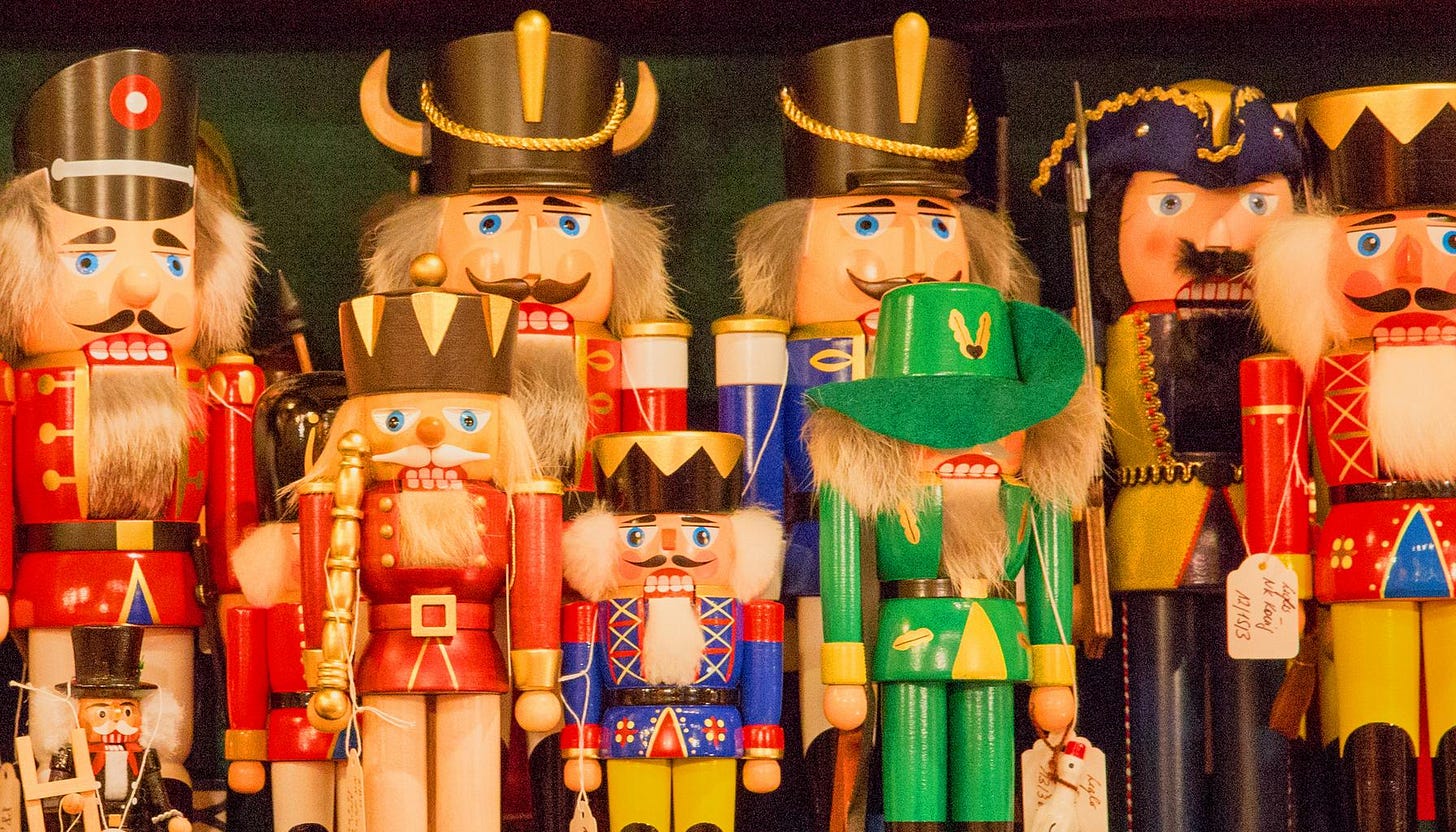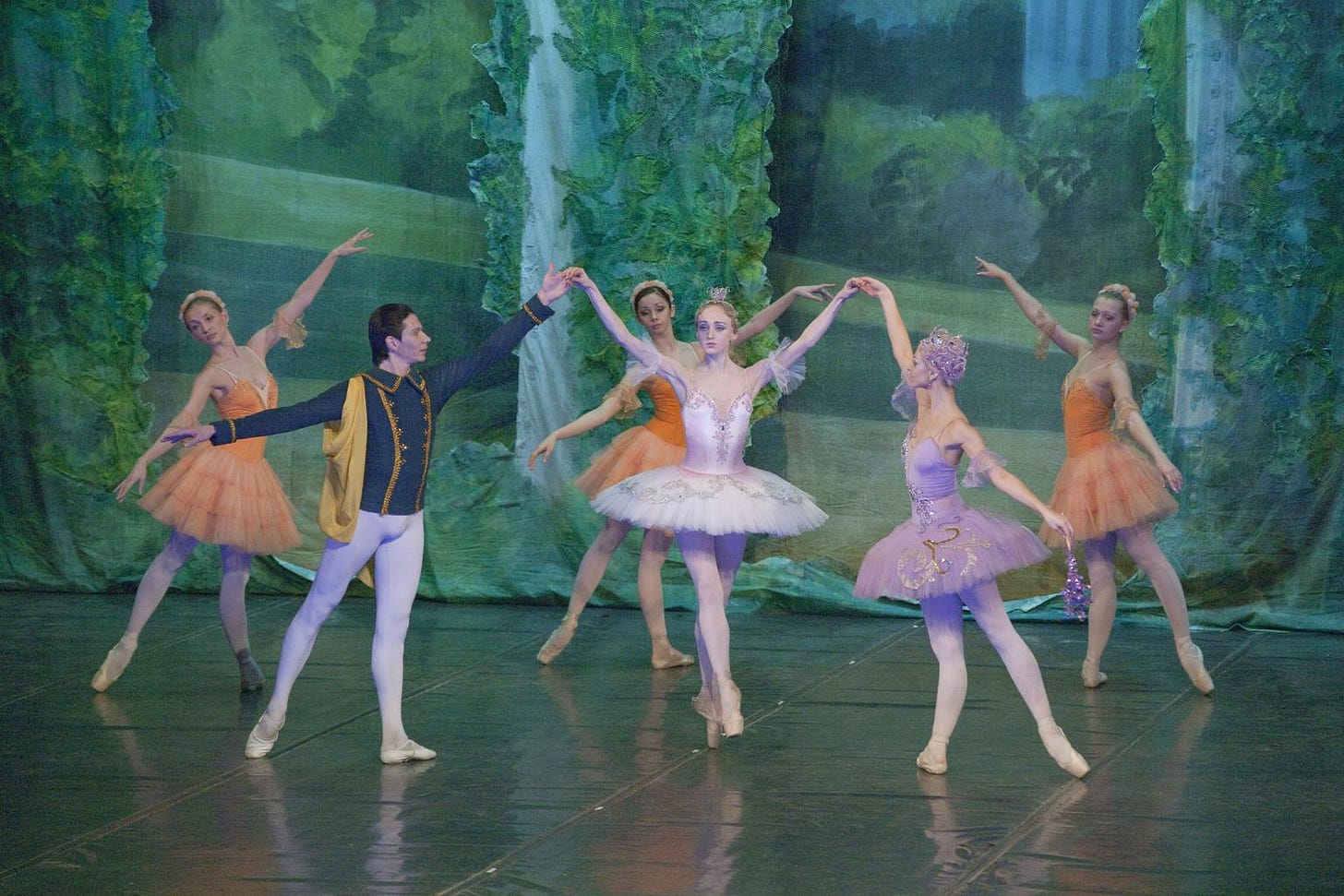If your family is like mine, you might find yourself surrounded by little (sometimes creepy) wooden dudes when you come home for the holidays. They vary in size, ranging from desk ornament stature to hip height and are often dressed as if they are about to go off to war. Nowadays, you can find these peculiar, yet oddly charming decorative creatures in shops all over the world, and yet, I have never once seen a person use one of these nutcrackers to actually crack a nut. So, how did nutcrackers make their way into our Christmas celebratory traditions? In honor of the upcoming holidays, I will try to get to the bottom of this mystery in this week’s edition.
The history of nutcracking
The nut cracking apparatus is by no means a new invention. Humans have enjoyed the earthy and buttery flavors of nuts for centuries, and have therefore, needed a means of opening those often-difficult shells. Naturally, our first nut cracking device was a rock—one need only give the nutshell a good smack to access the treasure inside. Soon enough, we developed far more sophisticated ways of accessing our nuts (yes, I know how that sounds).
Early nutcracking machines were not unlike some of the plyer-like nutcrackers we still use today (also used for cracking crab and lobster claws). These early designs involved placing a nut between two levers connected by a hinge and squeezing until the shell cracks open. We’ve found examples and references to these types of nutcrackers dating back to the 14th century in parts of Europe. People saw an opportunity to add some flare to their wooden nutcrackers by carving special designs into them or fashioning them to look like an animal or person. Thus began the tradition of artful nutcrackers. Other early designs included screw, ratchet, and spring-jointed mechanisms—so many ways to crack a nut!
The legend behind the nutcracker doll
While people across Europe were experimenting with interesting nutcracker designs, legend has it that the classic doll style that we’ve all come to love (and perhaps fear) appeared in what is now Germany in the 16th to 17th century. According to a widely told German folktale, a wealthy farmer in a rural town was frustrated by the amount of effort it took to crack his nuts. He offered a reward for anyone who could propose an easier way to crack nuts. A local puppeteer and woodworker provided a decorative doll with a large opening for a mouth and a lever that could easily crush nutshells. The farmer loved it, and the woodworker was rewarded for his successful nutcracker.
Whether or not this story is true, we can’t say for certain, but it does provide good context for the initial development of the doll style nutcracker. Decorative wood working was very common in Bohemia and Saxony (Germany today), and it was in this region of Europe where the characteristic doll soldier nutcracker design was first popularized. By the 19th century, the new nutcrackers spread throughout much of Europe as woodworkers and toy makers sold their designs on the road. They became a symbol of good luck and were often given as gifts, likely due to the fact that they were both useful and decorative.
Nutcrackers and Christmas
Unfortunately, there isn’t one specific moment we can point to and say, “There! That’s when the nutcracker doll became associated with Christmas.” History can be convoluted that way. However, in addition to the growing practice of Christmas gift giving in 18th century Europe, there were a few other factors that likely helped establish the nutcracker doll as a symbol of Christmas.
A Christmas ballet for the ages
In 1816, Prussian author E.T.A. Hoffmann wrote a story called the Nutcracker and the Mouse King about a young girl whose favorite Christmas toy, a nutcracker, comes to life and battles a mouse. This story was later retold by famous French author, Alexandre Dumas. His version of the story was adapted by Pyotr Ilyich Tchaikovsky into a ballet in 1892 and was more simply called The Nutcracker. This ballet, while not overwhelmingly successful initially, would eventually become one of the most famous ballets in history. Its timing also coincided with the more widespread manufacturing of nutcracker dolls in parts of Europe.
On Christmas Eve in 1944, the San Francisco Ballet performed the first U.S. version of The Nutcracker. This performance was very well-received and quickly became popular in the U.S. The New York City Ballet put on its first Nutcracker production in 1954, further expanding the status of The Nutcracker ballet as a Christmas tradition.
Gifts from abroad
Around the same time that The Nutcracker ballet was gaining popularity in the U.S., nutcracker dolls from Germany began making their way to the states. Following the conclusion of WWII, American G.I.’s stationed in Germany took a liking to the ornate figures and began sending them home as gifts during Christmas time. With the economic devastation of the war in Germany, many Germans couldn’t afford to buy nutcrackers, leading local manufacturers to focus their marketing efforts on Americans.
As shell-less nuts became more widely available, there was less need for a nutcracker design that was actually functional, so manufacturers saved money by making nutcrackers with smaller mouths and cheaper materials. Throughout the remainder of the 20th century, Americans spent more and more money on Christmas decorations, so companies in other parts of the world, mainly Asia, jumped on the nutcracker doll train, producing nutcrackers of all shapes and sizes for U.S. Christmas lovers. Now this quirky little toy is part of our lives every December.
Share this with the Nutcracker lover in your family!
More information about nutcrackers:
https://www.slate.com/articles/life/holidays/2010/12/in_a_nutshell.html




